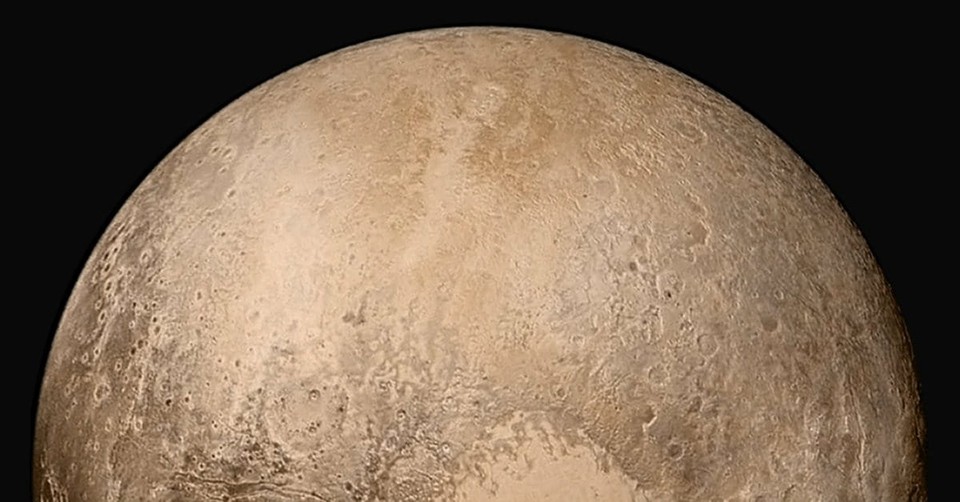Why Did God Make Pluto?

In 1989, America’s Voyager 2 spacecraft performed a reconnaissance flyby of Neptune, the distant ice giant planet that orbits about three billion miles from the sun. I was in graduate school then, and I stayed up all night watching PBS’s “Neptune All Night” broadcast of the images being sent from Voyager as it swept past Neptune and its retinue of moons. What a fascinating world this was! Neptune, a shimmering blue gem of a planet, had tremendously violent weather with 1,000-mph winds and huge, dark, brooding storms, something utterly unexpected for a planet so cold and so far from the sun.
Alan Stern, a young scientist in 1989, knew we needed a mission to Pluto. He agitated for many years to fund a flyby of Pluto, and finally the New Horizons spacecraft was launched on a big Atlas V rocket, speeding away from the Earth at 35,000 mph.
New Horizons dashed past the Moon in 9 hours and then, a little over a year later, it received a gravitational boost by Jupiter to shorten its flight time to Pluto. After a flight of nine years, this summer, on July 14, New Horizons flew by Pluto, and its instruments snapped photos and acquired data at a dizzying pace in the few hours of nearest approach and departure. The high-resolution images are just now being released, as it is impossible for New Horizons to transmit data quickly from that distance.
And what magnificent photos they are! Alan Stern, the principal investigator for the mission, wrote, “If an artist had painted this Pluto before our flyby, I probably would have called it over the top—but that’s what is actually there.
In this photo, Sputnik Planum is the relatively featureless white “plains,” and has approximately the area of Texas. It is an enormous "ice" cap of relatively soft nitrogen and carbon monoxide ices. There are jumbles ("chaos terrain") of enormous mountains along the left edge of Sputnik Planum, almost certainly mountains of very hard, cold water ice.
Fascinating linear features meandering at the lower left suggest tectonic activity, that is to say, active geology. Upon close inspection, some of these seem to be branched, appearing superficially like river tributaries. There's no flowing, liquid material on Pluto, though, at the dwarf planet’s very low temperature (~ 400 oF), and low atmospheric pressure.
Then there are the dark regions at the bottom: Pluto is one of the most “contrasty” bodies in the Solar System (Earth and Jupiter may have more brightness contrast). That black region (Cthulhu Regio, for H.P. Lovecraft fans) is heavily cratered, and those craters are very steep. What is the black material that coats this part of Pluto? The suite of spectroscopic instruments on the New Horizons spacecraft will hopefully tell us more about the dark material’s composition.
And Pluto has a complex atmosphere! The atmosphere is not dense, but it is deep, maybe up to 100 miles, in several layers of hazes.
The mission is not only revealing mysteries about Pluto, but maybe also about the Creator of the Heavens as well. A student asked a great question: Why would God make something like Pluto, something that we don't really need to know about and which was not seen at high resolution by humans until this mission? Why is it necessary to send a spacecraft there? But God is beautiful and so is His creation, even before the new heavens and the new earth that will one day eclipse this world. God made a beautiful creation for His own glory. Sometimes, though, he lets us in on His secrets, and we should rejoice in that opportunity. Think of all those colorful and bizarre animals deep in the ocean abyss that we never saw until recently (and the many more yet to be revealed). Humanity will never observe the vast bulk of the Universe. God has just let us see beautiful, detailed images of mysterious Pluto, and that's a privilege.
In the Holy Scriptures, Jesus is identified as the Creator God. For “the Son is the image of the invisible God, the firstborn over all creation. For in him all things were created: things in heaven and on earth, visible and invisible, whether thrones or powers or rulers or authorities; all things have been created through him and for him. He is before all things, and in him all things hold together.” (Colossians 1: 15-17).
Let us praise God for His awesome creation, and celebrate Alan Stern and the New Horizons team for revealing a bit more of it to us. Watch every Friday for releases of new Pluto images and data at the New Horizons web site.
Dr. Glenn A. Marsch is a professor of physics at Grove City College where he teaches physics and an innovative course, Studies in Science, Faith and Technology. He is a contributing scholar with The Center for Vision & Values.
Publication date: October 2, 2015
Originally published October 02, 2015.





